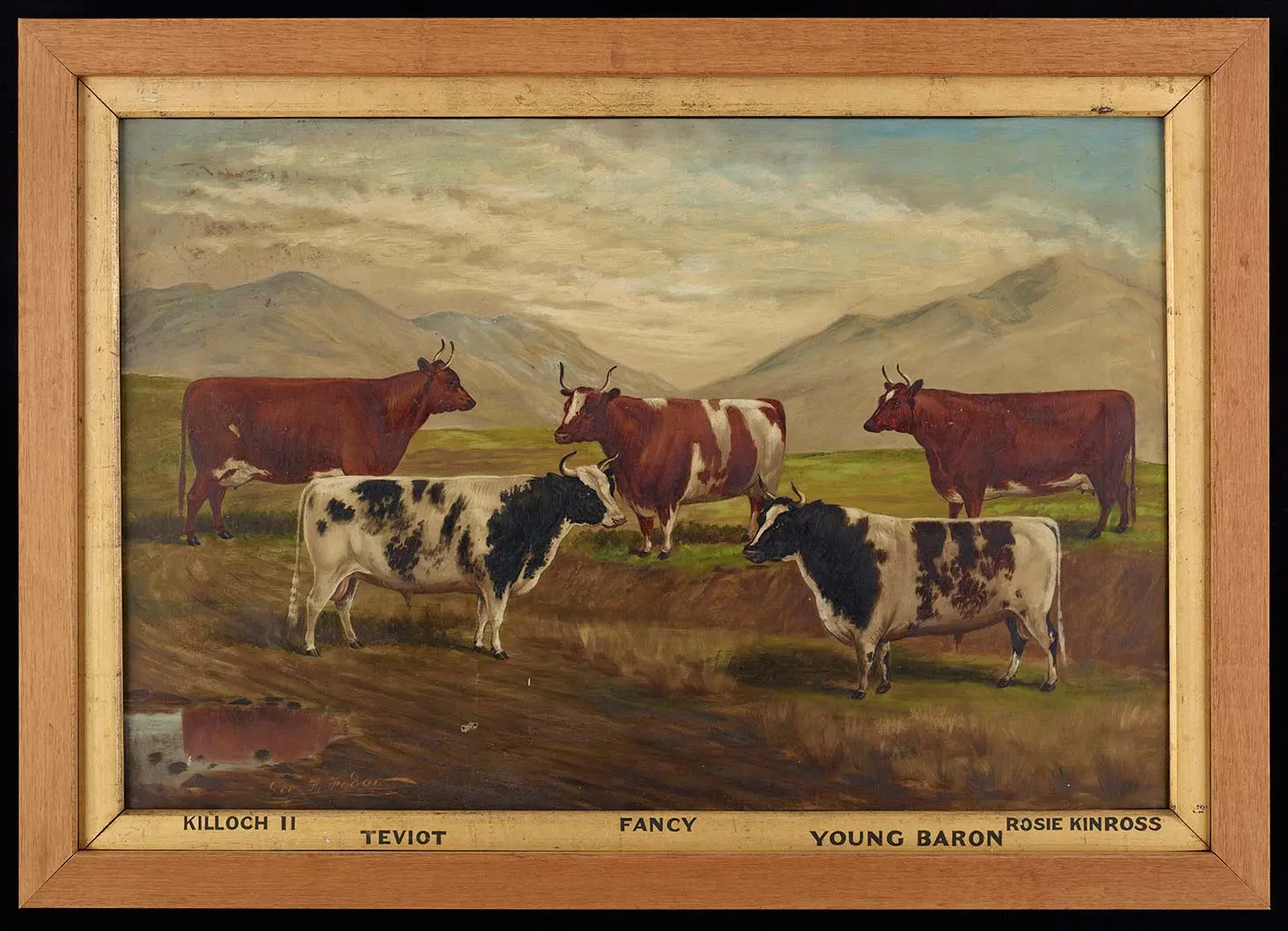Read a story about colonial farming and the development of refrigeration
The setting looks like Scotland, and some of the cows’ and bulls’ names sound Scottish, too, but this mid-1880s portrait of prize cattle originated in that fast-developing farming paradise of the southern hemisphere, New Zealand.
In 1886, visitors to the New Zealand section of London’s grand Colonial and Indian Exhibition may well have spotted this glowing portrayal of top-quality livestock from the British Empire’s farthest-flung colony. The painting was made by George Ferdinand Fodor (1859–1930), who was active in Dunedin in the 1880s and was regularly commissioned during that time to record farm animals and rural life for Dalgety & Co. Ltd, a stock and station agency. Pictorial propaganda like this was a forerunner of the illustrated marketing catalogue, intended to encourage immigration and investment by depicting New Zealand in a positive light.
The painting reflected the colony’s growing confidence in its reputation as an international trader in quality primary produce. By the 1880s, a generation of Pākehā settlers had been developing pastoral farms in the east and south of the South Island and the east of the North Island, in a climate temperate enough to allow their animals to live outdoors year-round. Herd and flock numbers had expanded to both feed the growing population and supply the international demand for wool, but there was no international market for meat.
That changed with the development of refrigeration. In 1882, the first shipment of some 5000 frozen sheep and lamb carcasses left Port Chalmers in Dunedin for London’s Smithfield Market. The success of that venture gave New Zealand companies an early advantage in the frozen meat trade and, with Britain’s population growth rapidly outstripping its ability to grow all its own food, access to a ready market for their goods.
So began various preferential arrangements with Britain that New Zealand farmers, processing companies (many British owned) and governments alike came to depend on for economic stability. For nearly a century, through boom, bust and two world wars, Britain’s ‘farm of the south’ shipped off much of its massive surplus of meat and dairy products to the mother country in the north.
All that changed in the 1970s, when Britain abandoned the cosy relationship with her former imperial family to join her neighbours in the European Common Market. New Zealand farming adapted to the shock and weathered that storm, even as the climate crisis — a far greater challenge for the present and future of us all — loomed on the horizon.
Story written by: Suzanne Hardy
Copyright: Turnbull Endowment Trust
Find out more
Read a connected story from Te Kupenga: Selling a farming dream.
Explore the Alexander Turnbull Library collections further:
Topic Explorer has Colonial life in New Zealand.
Many Answers has:
Curriculum links
